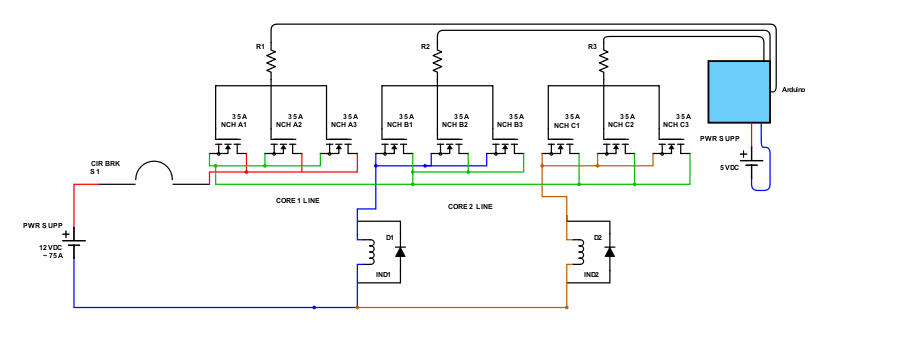MOSFET High-Current Switch Design – A Beginner’s Guide

🚨 The Problem :
When switching high currents, relays can be bulky, slow, or wear out over time. Enter the MOSFET—compact, fast, and efficient. However, using the wrong MOSFET or neglecting proper gate drive can lead to overheating, slow switching, or even failure.
🛠️ The Solution :
Choose a low R<sub>DS(on)</sub> power MOSFET rated for more than your load current. Pair it with a gate resistor and a proper driver to handle switching speed and avoid voltage spikes. Always check thermal limits and use a heatsink if necessary.
🧪 Practical Example :
Let’s say you need to switch 10A at 12V for a motor.
A MOSFET with R<sub>DS(on)</sub> = 5mΩ dissipates:
P=I2×R=(10)2×0.005=0.5W
This is manageable with basic heatsinking—far better than bulky relays!
🧮 Sample Calculation :
Want to control this with a microcontroller? If your gate charge (Q<sub>g</sub>) is 40nC and you want a 100ns rise time:
Igate=Qg/tr=40nC/100ns=0.4A⇒Rgate=5V/0.4A≈12.5Ω
Choose a 10Ω gate resistor for fast switching.
🔧 Product Recommendation :
Need high-current MOSFETs or flux for assembly? Check our Made in India range:
🛒 Shop now at SmartXProKits.in
Support our work and India’s innovation—buy from our Make in India site!



















